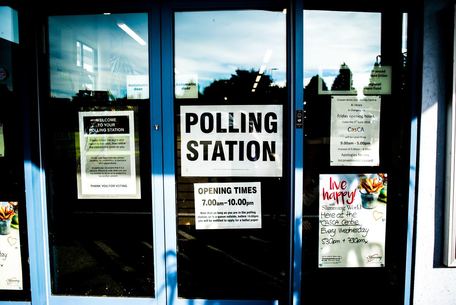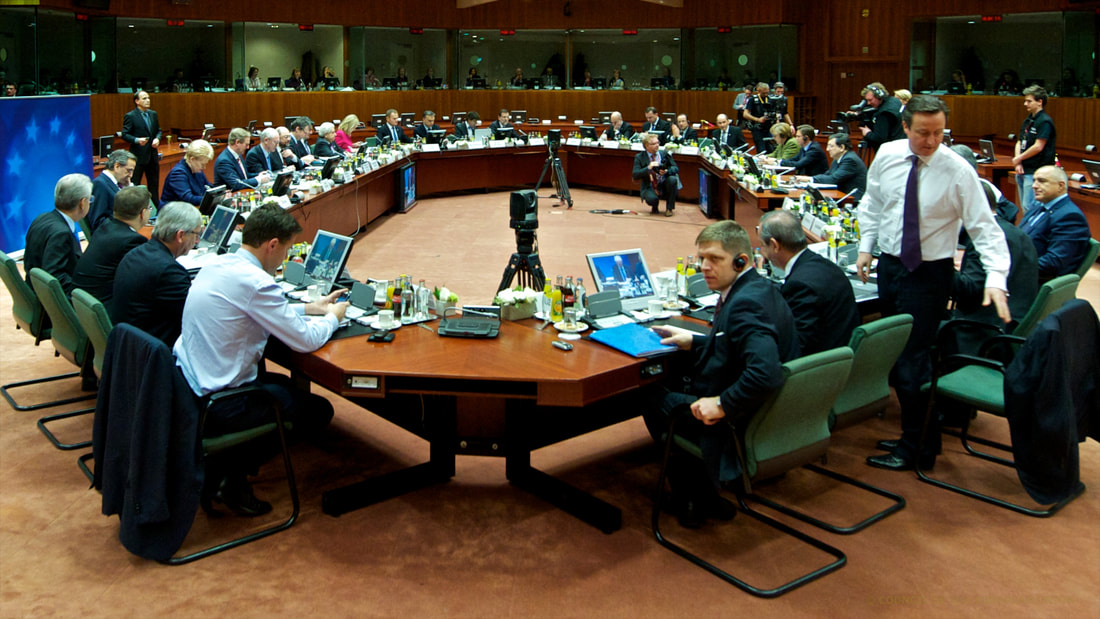Emotions and Political Unrestwith G. Tabellini
Journal of Political Economy
125, no. 3 pp.903-946, 2017. This paper formulates a general theory of how political unrest influences public policy. Political unrest is motivated by emotions. Individuals engage in protests if they are aggrieved and feel that they have been treated unfairly. This reaction is predictable because individuals have a consistent view of what is fair.
This framework yields novel insights about the sources of political influence of different groups in society. Even if the government is benevolent and all groups have access to the same technology for political participation, equilibrium policy can be distorted. Individuals form their view of what is fair taking into account the current state of the world. If fewer aggregate resources are available, individuals accept a lower level of welfare. This resignation effect in turn induces a benevolent government to procrastinate unpleasant policy choices |
Loss Aversion in Politicswith A. Alesina
American Journal of Political Science
63/4, pp.936-947, 2019. We study how loss aversion affects the political equilibrium in a simple majority voting model. First, we show a status quo bias, which leads to path dependence. Second, loss aversion implies a moderating effect on the most extreme voters. Third, in a dynamic setting, the effect of loss aversion diminishes with the length of the planning horizon of voters; however, in the presence of a projection bias, majorities are partially unable to understand how fast they will adapt to a new policy. This makes changes less likely and induces time inconsistency: policy changes are timid at the beginning, while in later periods they are made progressively more radical. Fourth, in a stochastic environment, loss aversion yields a significant distaste for risk, but also a smaller attachment to the status quo. The application of these results to a model of redistribution leads to empirically plausible implications.
Earlier version: WP 2015, NBER No. 21077
|
Social norms with private values: Theory and experimentswith Giovanna d’Adda, Martin Dufwenberg, Guido Tabellini
Games and Economic Behavior 124 (2020) 288–304
We propose a simple theory of social norms that models the distinct influence on behavior of personal values, normative expectations and empirical expectations. The first and second moments of the distribution of normative expectations affect the strength of social norms’ pull on behavior. We test the empirical predictions of the model through an experiment based on a variant of the dictator game. Consistent with the theory, we find that normative expectations influence generosity and that higher dispersion of such expectations leads to more variation in giving behavior
|
Promises, Expectations, and Causationwith G. Di Bartolomeo, M. Dufwenberg, and S. Papa
Games and Economic Behavior, 113 (2019) 137-146
Why do people keep their promises? Vanberg (2008) and Ederer & Stremitzer (2016) provide causal evidence in favor of, respectively, an intrinsic preference for keeping one’s word and an expectations-based account (suggested by Charness & Dufwenberg 2006) based on guilt aversion. The overall picture is incomplete though, as no study disentangles effects in a design that provides exogenous variation of both (the key features of) promises and beliefs. We present an experimental design that fills the gap.
|
Regulation versus Taxationwith A. Alesina
Journal of Public Economics
vol. 110(C), pp.147-156, 2014. We study which policy tool and at what level is chosen by majority voting in order to reduce negative externalities, such as pollution. We consider three instruments: a rule, that sets an upper limit to the activity which produces the negative externality, a quota that forces a proportional reduction of the activity, and a proportional tax on it. For all instruments the majority chooses levels which are too restrictive when the activity is performed mainly by a small fraction of the population, and when costs for reducing activities or paying taxes are quite convex. However, in case of a rule too restrictive levels are more frequent than in case of a tax or a quota. Even though a tax is in general superior to the other two instruments, the majority may strategically choose a rule in order to charge the minority a larger share of the cost for the externality reduction.
|
Who has the power in the EU?with J. Barr
Mathematical Social Sciences
vol. 57(3), pp. 339-366, 2009. The European countries are in the process of reforming the EU's institutions. If ratified, the Lisbon Treaty will have strong implications for the balance of power among member states. Building on the work of Shapley (1977) and Owen (1972), we present a measure of power that is based on players' preferences and number of votes. We apply this measure to the Council of Ministers to see who wields power now and who is likely to wield power with the future voting scheme. Further, we show how a country's power can change based on the preferences of the agenda setter, which, in this case, is the European Commission
|
Voting as a Lotterywith G. Attanasi and L. Corazzini
Journal of Public Economics
vol. 146, pp. 129-137, 2017 Supermajorities have their advantage as well as their disadvantage: they provide an hedge against being in the minority, but they make being in the majority less likely. We characterize this trade-off and compute the most preferred majority threshold. The relevant parameters are voting power, risk aversion and pessimism. People who feel powerful prefer low thresholds. High thresholds are preferred by risk averters or by those who are pessimistic about being in the majority. Further we study constitutional agreements on the voting rule. Members of the constituent assembly are heterogeneous in the parameters above. We show that weak and minority members succeed in pushing forward on high and protective rule.
|
Integration Contracts and Asset Complementarity: Evidence from US Datawith P. Di Giannatale
International Journal of Industrial Organization, 61, pp. 192-222, 2018
Firms sign integration contracts to increase proofs from trade and competition with third parties. An integration contract can improve complementarity among partners (productivity effect) and increase their power in the marketplace (strategic effect). We investigate three bilateral contracts: M&A, Minority Stake purchase, and Joint Venture. Using a cooperative game approach, we characterize quite general protability conditions. To estimate them, we adopt a novel complementarity index. It shows that for any kind of contract, a signifcant share of the integration proofs is due to the strategic effect of increased market power. In most cases productivity gains are relatively less important.
|
Sanctions and Incentives to Repudiate External Debtwith Carlo de Bassa and Edoardo Grillo
Games & Economic Behavior, 124, pp. 288-304, 2020.
Often foreign countries levy sanctions in the attempt to foment discontent with a hostile government. But sanctions may provoke costly reactions by the leaders of the target country. This paper presents a model in which sanctions exhaust the target country economically and impair its government's scal capacity. Then, an oce-motivated leader may nd it convenient to default on foreign debt in order to free resources that she can invest to regain internal political support. The default thus becomes a defensive tool to partially dampen the internal political turmoil sanctions generate.
|
Financial Systemic Risk: Taxation or Regulation?
with D. Masciandaro
Journal of Banking and Finance
37(2), pp. 587-596, 2013. In this paper we describe systemic financial risk as a pollution issue. Free riding leads to excess risk production. This problem may be solved, at least partially, either with financial regulation or taxation. From a normative viewpoint taxation is superior in many respects. However, reality shows that financial regulation is more frequently adopted. In this paper we make a positive, politico-economic argument. If the majority chooses a tax, then it is likely to be too low. If it chooses regulation it will possibly be too harsh. Moreover, a majority of low polluting portfolio owners may strategically use regulation in order to charge the minority a larger share of the externality reduction.
|
Voting chances instead of voting weights
with P. Di Giannatale
Mathematical Social Sciences
vol. 65(3), pp. 164-173, 2013. We study political distortions that emerge in situations where agents' political power is disproportionate with respect to their economic power. We provide a specific definition which adopts the same measure unit, the Shapley value, to evaluate both the economic and the political power. We show that usual weighted majority voting cannot prevent political distortions from emerging in a huge mass of situations. We propose an alternative voting method based on random assignments of voting rights. Agents are given chances to vote instead of weights. If chances are computed according to a specific formula, no political distortion occurs.
As an application, we analyze the rotation voting system recently adopted by the European Central Bank. We find that this system yields an enormous amount of political distortion. Then we compute the voting chances that should be assigned to countries in order to eliminate it.." |
Preferences, the Agenda Setter, and the Distribution of Power in the EU
with J. Barr
Social Choice and Welfare
28(1), pp. 41-60, 2007. In this paper, we present a generalization of power indices which includes the preferences of the voters. Using a Multilinear Extension perspective (Owen, 1972a) we measure the probability of the players’voting “yes” for a particular political issue. Further, we randomize the issues and show the influence that the Agenda Setter can have on a player’s power. We demonstrate these results using data from theEuropean Union to show how the power distribution may shift after enlargement and under the new Constitutional Treaty
|











